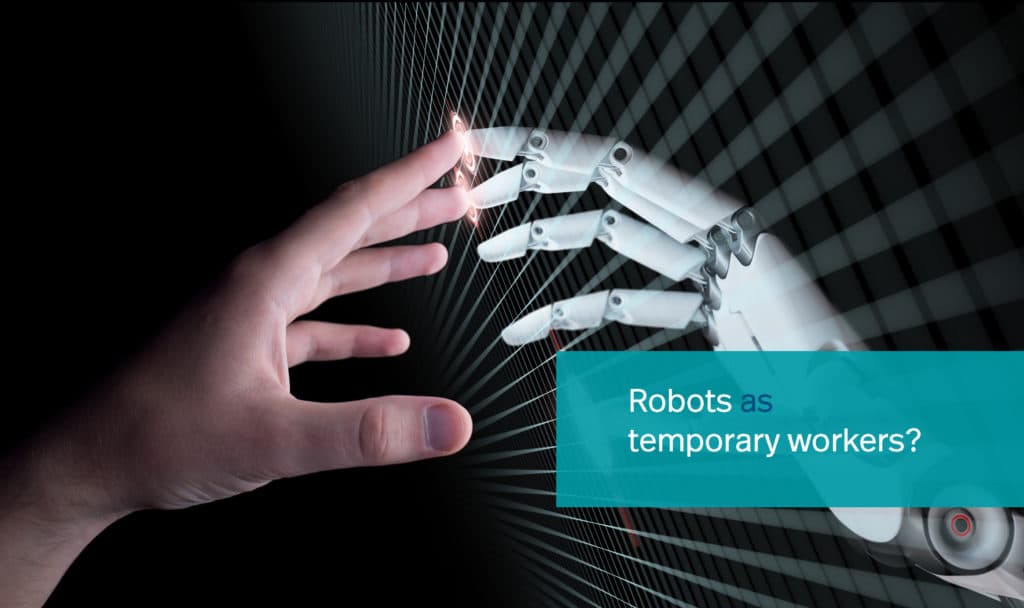The Industrial Revolution has made it possible to power machines with small compact motors and has introduced the first robotic process automation in various industries as of 1800. Today human-sized robots with the capacity for near-human artificial intelligence and movement are available. Reduced costs, increased capabilities and increased flexibility in utilisation are accelerating the growth of using robots in automated production facilities. They are mainly used in fixed setups, integrated in the regular mechanical set-up of a production, assembly or distribution plant.
The next step is introducing temporary robot set-ups to overcome temporary issues. A key challenge for companies will be deciding how best to harness the flexible robot power and how to integrate it in processes alongside regular workers.
Robots as part of your flexible labour workforce?
The essential difference with the first generation robots is that robots are now more accessible and programmable. The starting point is that everyone should be able to work with these robots. Current manufacturers are focusing on intuitive and easy use by a non-technically trained employee. If so, robots can for example take over the physically most demanding work, allowing the employee to focus on other, less physically challenging tasks. Once the required skills to design routine activities – like install, operate, and maintain – have become at a level that’s easily trainable to regular operators, flex-robots will become part of the flexible resources too.
The question is not “if”, but “when”
It is likely that robots will become part of your daily flexible workforce. The first staffing agencies for robots have been established. Manufacturers of robots are setting up “Robot as a Service” activities in industries like Automotive, Packaging and Electronics.
Most challenging today is the integration of robots with the human flexible workforce, even though robots become more and more “human” as well as sensitive to their environment. We may have to rethink and redesign processes to integrate te abilities of robots while respecting the human workers in a workplace. As soon this is done robots will be able to ease business processes, to help with staffing shortages and take over heavy physical work. And this will probably be sooner than we expect!
Ron Bosma is Managing Partner at TalentIn. With more than 30 years in the industry and has an extensive experience in RPO, MSP and SOW solutions, having served client’s like Philips, Siemens and PWC to define and execute their contingent talent management strategy including supportive technology systems like VMS and ATS. His previous roles have spanned across numerous EMEA markets and provided an opportunity for him to work with a variety of companies in many sectors.
TalentIn can help you develop or update your contingent labour recruitment programme by assessing your current plans or programme with our Talent Management Maturity Model that deliver results and stays ahead of the paradigm shift. We are happy to discuss this topic more in depth with you. Please visit us at www.talentin.eu, mail us at info@talentin.eu or call us on +31 10 307 54 22.





